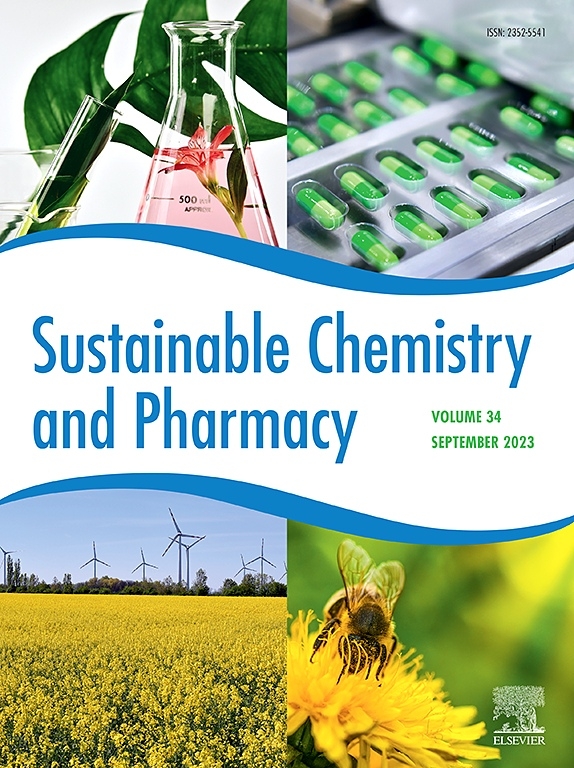Recycling three local waste materials for optimizing the mechanical performance of fly ash-based geopolymer cement: Application of a ternary mixture design and artificial neural networks modeling
IF 5.8
2区 化学
Q2 CHEMISTRY, MULTIDISCIPLINARY
引用次数: 0
Abstract
Geopolymer technology offers a promising approach for recycling inorganic solid waste and enhancing the properties of sustainable building materials. This research combines eco-friendly waste recycling with advanced statistical and machine learning techniques to improve the mechanical performance of fly ash-based geopolymer cement. Ternary Mixture Design (TMD) in conjunction with Artificial Neural Networks (ANN) is employed to optimize key characteristics, including compressive strength, bulk density, and apparent porosity. The study utilized three types of local waste—ceramic waste (CW), coal bottom ash (CBA), and marble powder (MP)—as an inorganic reinforcement system. The optimization through TMD led to an ideal combination of (40 % CW-41 % CBA-19 % MP), resulting in a high-performing geopolymer with a compressive strength of 27.63 MPa, an apparent density of 1.93 g/cm3, and an apparent porosity of 22.07 %. Both TMD and ANNs accurately predicted the experimental results, with ANNs exhibiting slightly greater precision. Physicochemical characterizations confirmed that the optimized geopolymer (OGP) displayed a compact and homogeneous matrix dominated by an amorphous sodium-calcium aluminosilicate hydrate (N(C)-A-S-H) gel phase. In contrast, the non-performing geopolymer (NPGP) system revealed a porous and heterogeneous structure. This work demonstrates that integrating waste reuse with advanced modeling tools can produce high-performance and sustainable geopolymer materials. The findings advocate for the development of scalable, eco-friendly alternatives for the construction industry and emphasize the benefits of merging traditional statistical methods with machine learning in materials engineering.

回收三种当地废弃物以优化粉煤灰基地聚合物水泥的力学性能:三元混合物设计和人工神经网络建模的应用
地聚合物技术为回收无机固体废物和提高可持续建筑材料的性能提供了一种很有前途的方法。本研究将环保废物回收与先进的统计和机器学习技术相结合,以提高粉煤灰基地聚合物水泥的力学性能。三元混合物设计(TMD)结合人工神经网络(ANN)来优化关键特性,包括抗压强度、体积密度和表观孔隙率。该研究利用三种当地废物-陶瓷废物(CW),煤底灰(CBA)和大理石粉(MP) -作为无机增强体系。通过TMD优化得到的理想组合为(40% cw - 41% cba - 19% MP),得到的高性能地聚合物抗压强度为27.63 MPa,表观密度为1.93 g/cm3,表观孔隙率为22.07%。TMD和人工神经网络都能准确预测实验结果,人工神经网络的精度略高。物理化学表征证实,优化后的地聚合物(OGP)具有致密均匀的基质,主要为无定形水合铝硅酸钠钙(N(C) a - s - h)凝胶相。相反,不良地聚合物(NPGP)体系呈现多孔和非均质结构。这项工作表明,将废物再利用与先进的建模工具相结合,可以生产出高性能和可持续的地聚合物材料。研究结果提倡为建筑行业开发可扩展的、环保的替代方案,并强调将传统统计方法与材料工程中的机器学习相结合的好处。
本文章由计算机程序翻译,如有差异,请以英文原文为准。
求助全文
约1分钟内获得全文
求助全文
来源期刊

Sustainable Chemistry and Pharmacy
Environmental Science-Pollution
CiteScore
8.20
自引率
6.70%
发文量
274
审稿时长
37 days
期刊介绍:
Sustainable Chemistry and Pharmacy publishes research that is related to chemistry, pharmacy and sustainability science in a forward oriented manner. It provides a unique forum for the publication of innovative research on the intersection and overlap of chemistry and pharmacy on the one hand and sustainability on the other hand. This includes contributions related to increasing sustainability of chemistry and pharmaceutical science and industries itself as well as their products in relation to the contribution of these to sustainability itself. As an interdisciplinary and transdisciplinary journal it addresses all sustainability related issues along the life cycle of chemical and pharmaceutical products form resource related topics until the end of life of products. This includes not only natural science based approaches and issues but also from humanities, social science and economics as far as they are dealing with sustainability related to chemistry and pharmacy. Sustainable Chemistry and Pharmacy aims at bridging between disciplines as well as developing and developed countries.
 求助内容:
求助内容: 应助结果提醒方式:
应助结果提醒方式:


